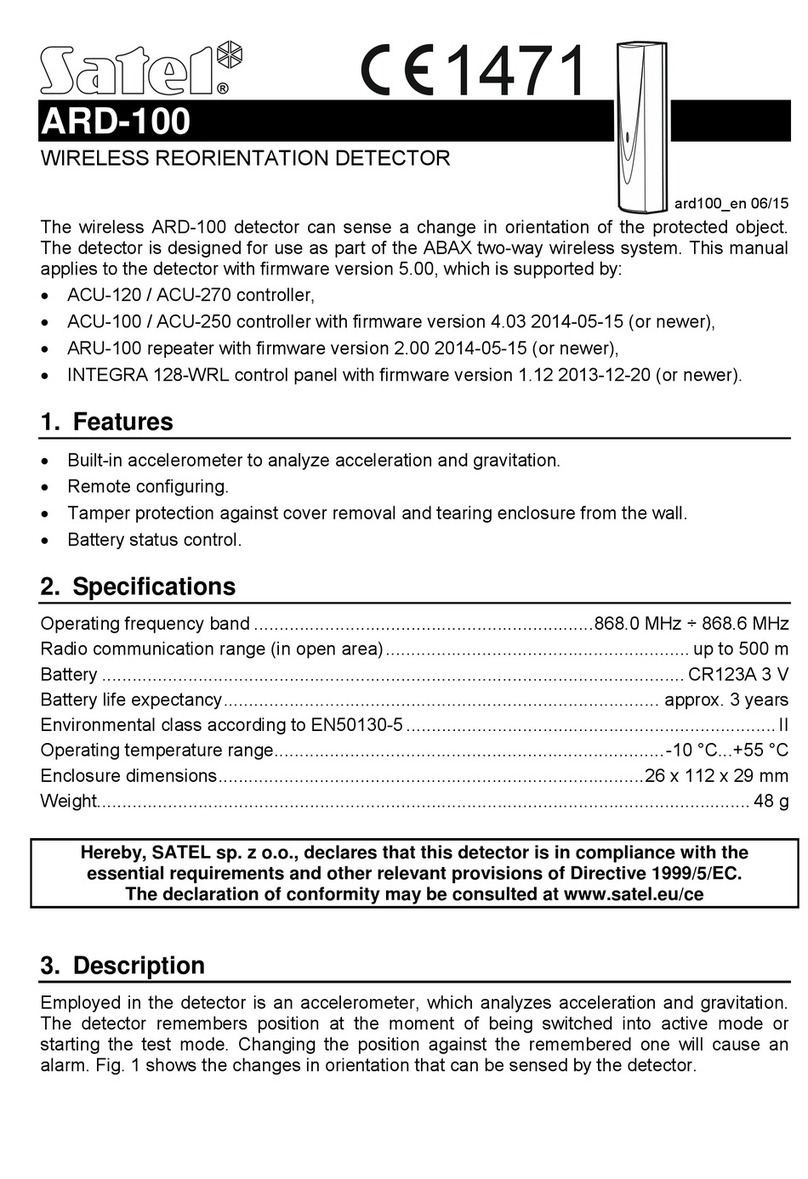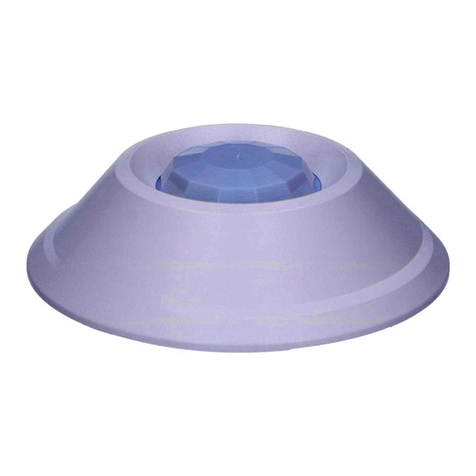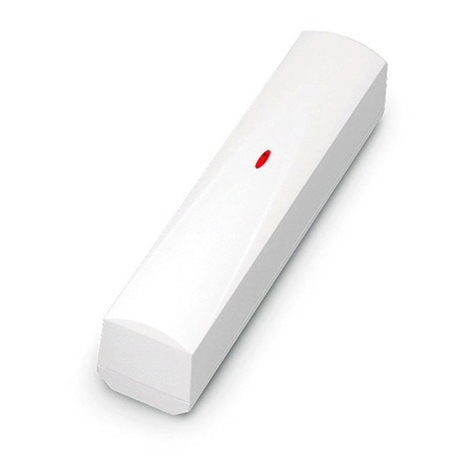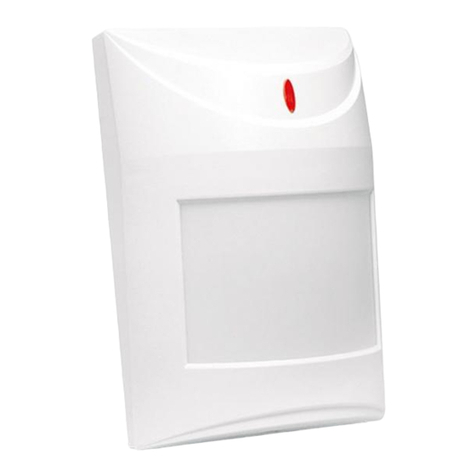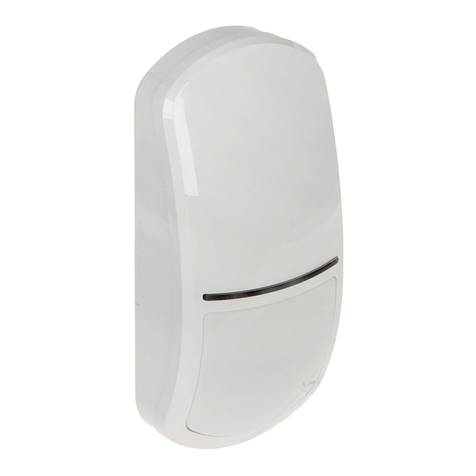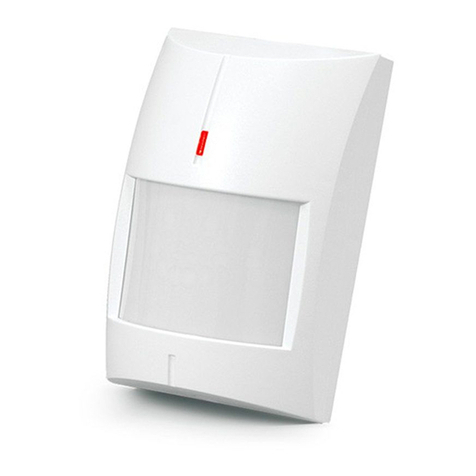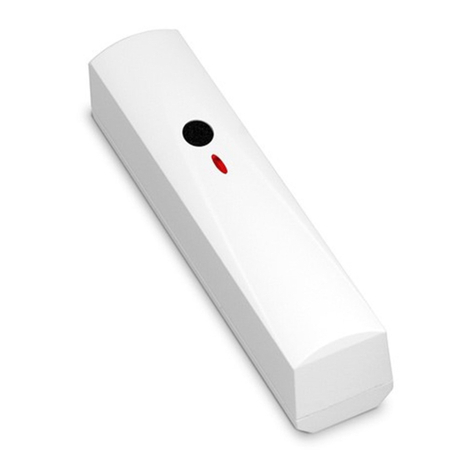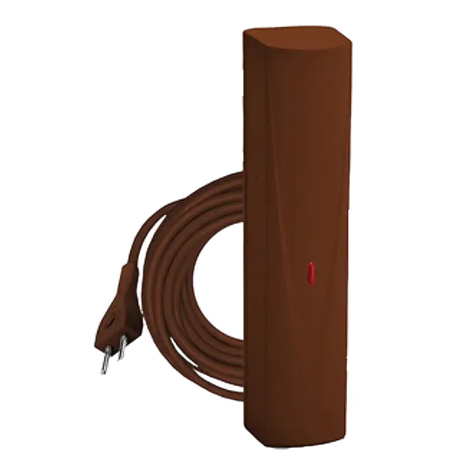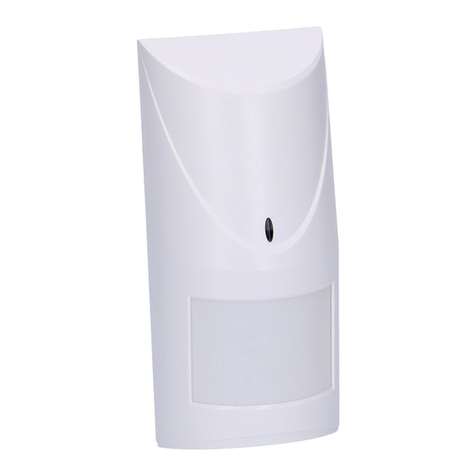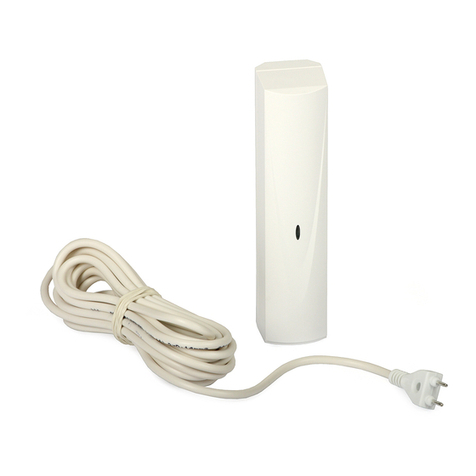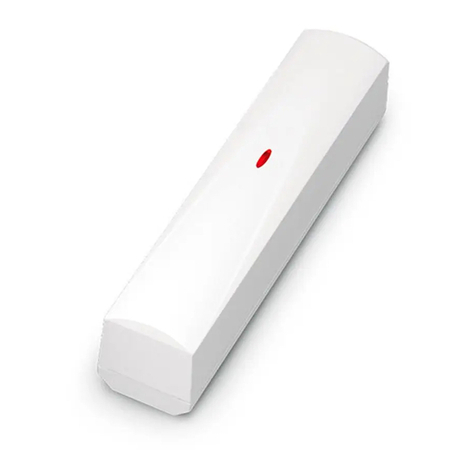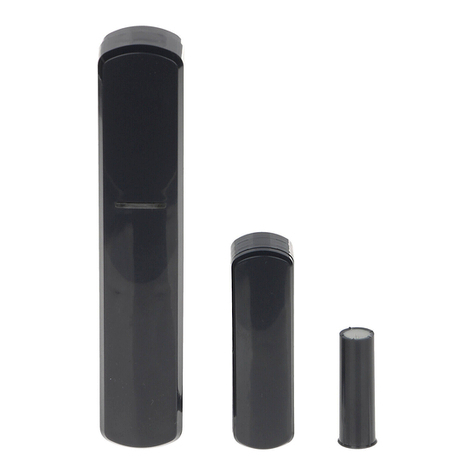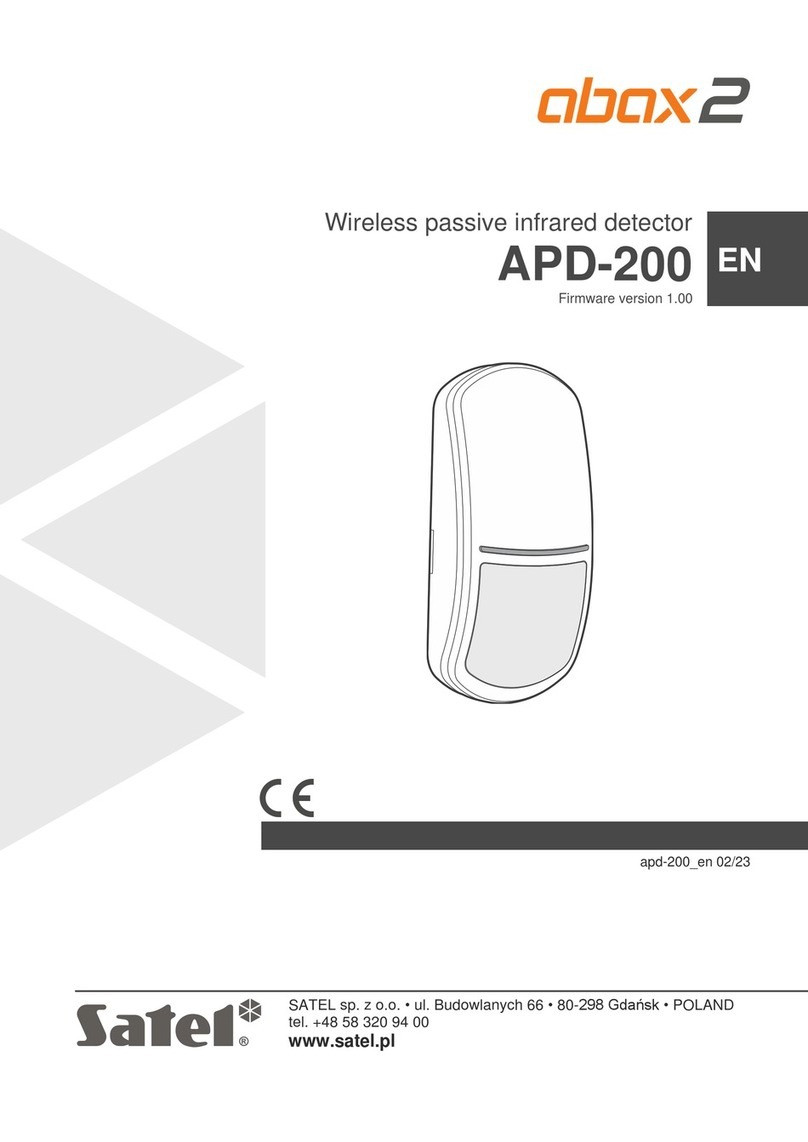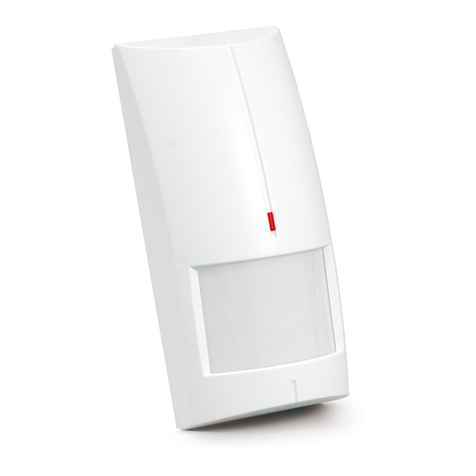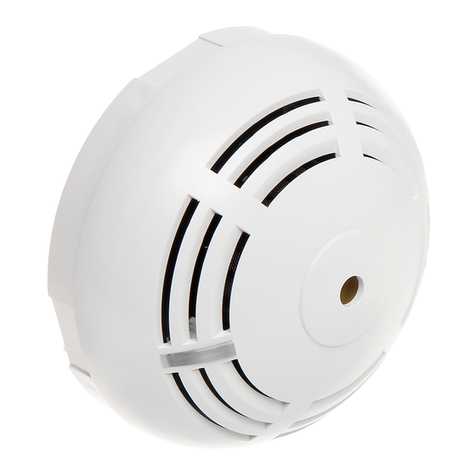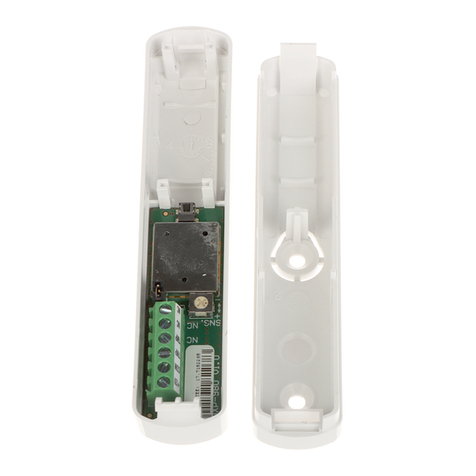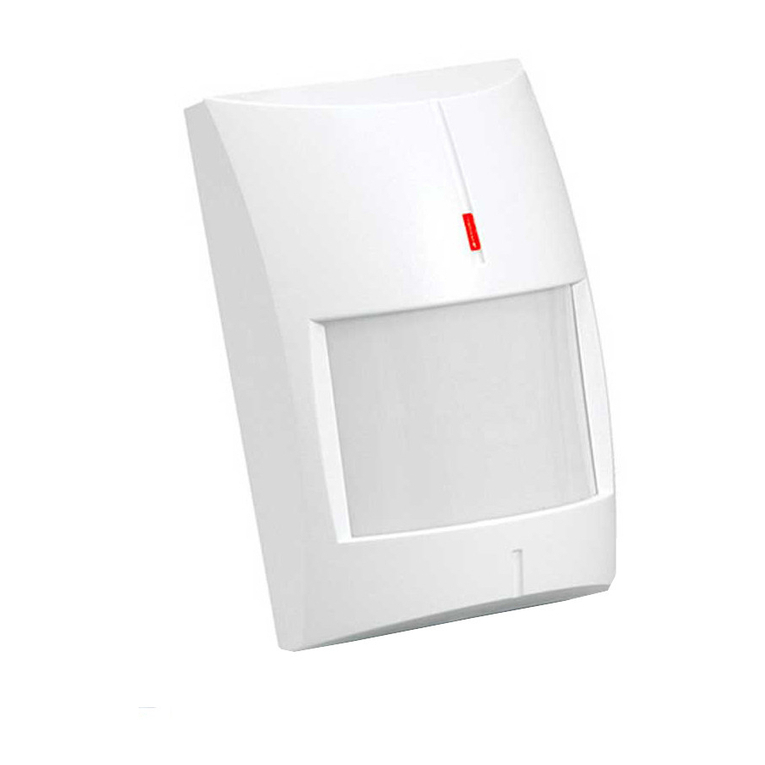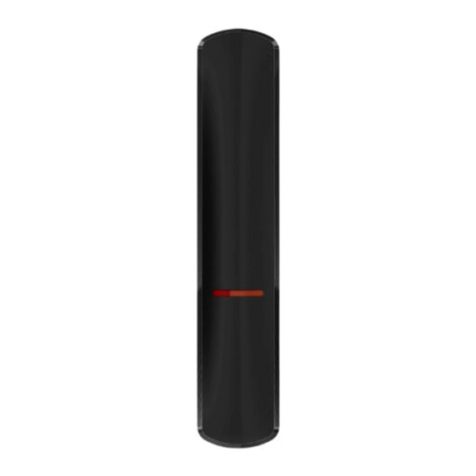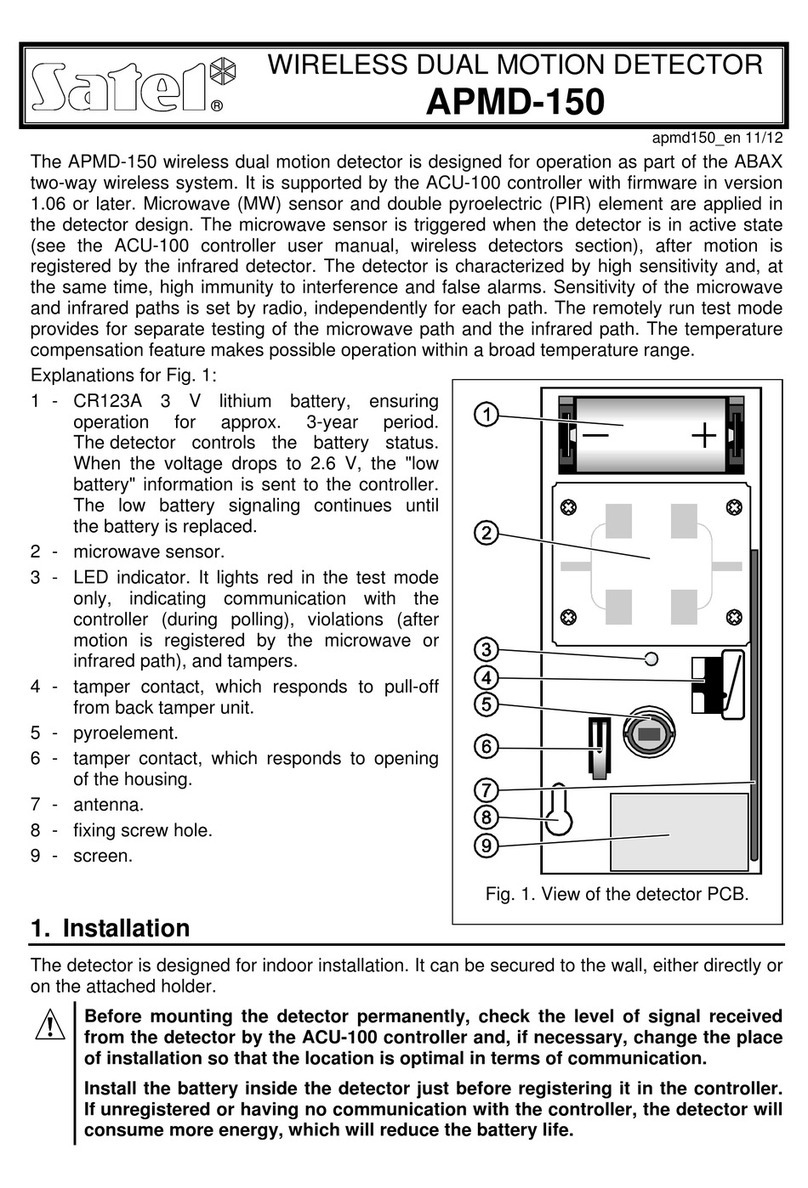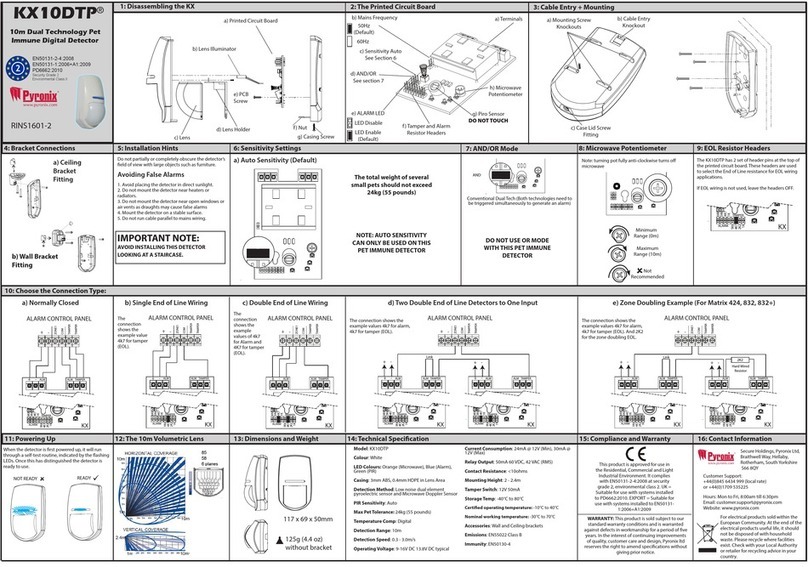
The AGATE detector makes it possible to detect motion at the moment of crossing the
perimeter of protected area. It is designed for perimeter protection. This manual applies to
the detector with electronics version 1.4 (or newer) and firmware version 1.02 (or newer). The
detector meets requirements of the EN 50131-2-4 standard for Grade 3.
The Grade 3 certificate applies to the indoor use. The outdoor use of the
detector (despite full Grade 3 functionality) is not covered by the certificate
(there is no standard for the outdoor detectors).
1. Features
Passive infrared (PIR) sensor and microwave sensor.
Adjustable detection sensitivity of both sensors.
Digital motion detection algorithm.
Digital temperature compensation.
Active IR anti-mask, compliant with EN 50131-2-4 requirements for Grade 3.
Tricolor LED indicator.
Remote LED enable/disable.
Capability of separate sensor configuring/testing.
Supervision of detector signal path and supply voltage.
Tamper protection against cover removal and tearing enclosure from the wall.
Weatherproof enclosure featuring a very high mechanical strength.
Angle-type mounting bracket included.
2. Description
The alarm will be triggered when infrared sensor (PIR) and microwave sensor detect motion
within a time period shorter than 5 seconds.
Active IR anti-mask
The active anti-mask feature detects attempts to cover the detector or paint over the lens.
The detector emits infrared radiation and measures the amount of radiation reflected. If the
lens is covered or painted over, the amount of reflected radiation will change. Registering
a rapid change in the level of infrared radiation will result in activating the anti-mask relay.
The relay will remain active as long as masking is sensed by the detector.
The active anti-mask feature meets the EN 50131-2-4 requirements.
Supervision features
In the event of the voltage drop below 9 V (± 5%) for more than 2 seconds or the signal path
failure, the detector will signal a trouble. The trouble is indicated by the activation of alarm
relay and the steady light of all LED indicators. The trouble signaling will continue as long as
the trouble persists.
Remote LED enable/disable
The LED can be enabled/disabled remotely when the LED is not enabled by means of the
jumper. The LED terminal is provided to allow remote LED enable/disable. The LED is
enabled, when the terminal is connected to the common ground, and disabled, when the
